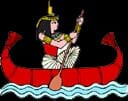 In ancient Egyptian culture, cats came a long way from being wild felines to establishing their status as sacred animals. In this article, we will touch upon some of the associations that cats had in regards to worshipping ancient Egyptian gods and goddesses, such as Bastet.
In ancient Egyptian culture, cats came a long way from being wild felines to establishing their status as sacred animals. In this article, we will touch upon some of the associations that cats had in regards to worshipping ancient Egyptian gods and goddesses, such as Bastet.
Cats: Sacred Animals in Egyptian Culture
While other animals had been linked to a specific diety representing the locals, the cat never reached the process of gaining an official starus within the culture. The creature never became a “member of the divine community” according to Jaromir Malek, author of The Cat in Ancient Egypt. However, the cat was able to go beyond any recognition other animals received from worshippers. There is no mistaking the sacredness of the cat in Egyptian culture.
In the Pyramid Texts, the first recorded mention of a feline cat goddess was named Mafdet. She appears in the Texts as one that kills a serpent using her claws. Other cat deities would emerge, but the most significant of them all was Bastet and Sekhmet (with the head of a lion), who became worshipped by others outside of the Egyptian culture.
Also referred to as Bast, Pasch, and Ubasti, Bastet was described as possessing the body of a woman with the head of a domestic cat. She was also linked to the Eye of Ra, and believed to have the power to act in the same manner as the sun god. The Egyptians adore Bastet and made her a household goddess. She soon became the protector of women, children and domestic cats; and served as the goddess of the sunrise, music, dance, pleasure, and of course , family, fertility and birth.
In Egyptian culture, Bastet was opposed by a sort of evil counterpart in the goddess Sekhmet. She represented the cat goddess’ destructive force and took on the position of war and pestilence. However, myths show that Sekhmet eventually becomes tamed, as Ra uses intoxication to get her to become a strong protector of the humans. When joined together, Bastet and Sekhmet create a balance within the forces of nature.
Cats , Everywhere
The sacred animals were seen as an important object and entity within everyday life. Their image emerged in many different facets of life for the Egyptians. Cats were etched in gold on elaborate bracelets. The Egyptians made small pendants shaped like cats out of gold. Soapstone serves as the material of choice for amulets depicting the cat that were used for necklaces and rings. The wooden handles on mirrors used by the women to apply makeup were shaped into the body of the cat. Their cosmetic pots highlighted feline images.
The power that the cat possessed was seen in the belief that anyone could benefit from the protection of the cat goddess. Simply place an amulet on your clothing or wear it in your ears or around your neck, and the Egyptians believed this would grant them protection.
Even in your dreams, the cat meant good luck. For instance, if a farmer saw one in the middle of their slumber, they were sure to enjoy a decent harvest.

